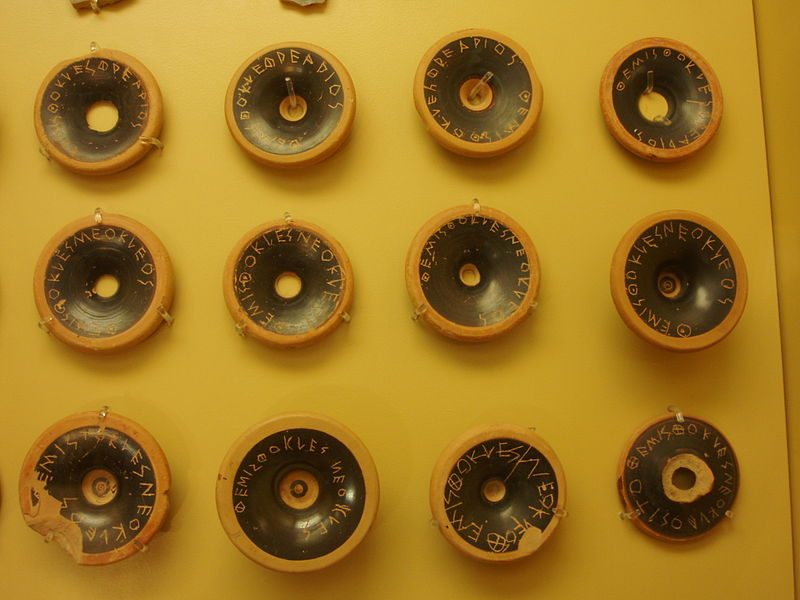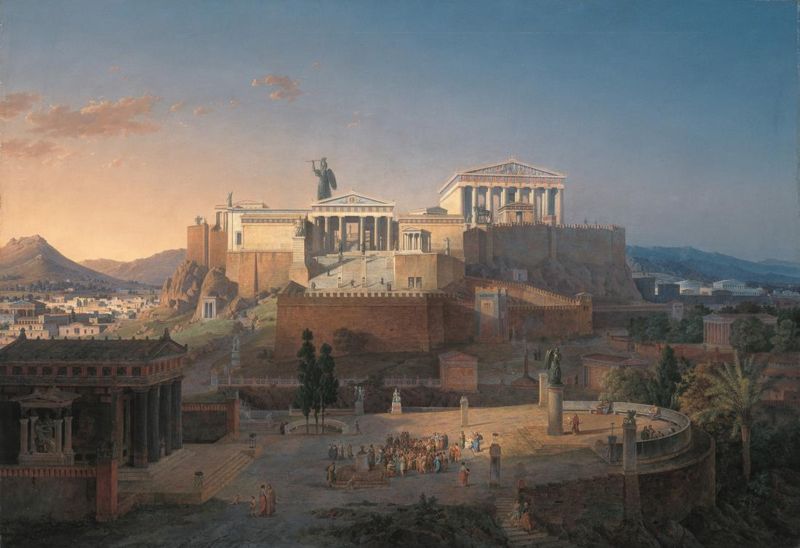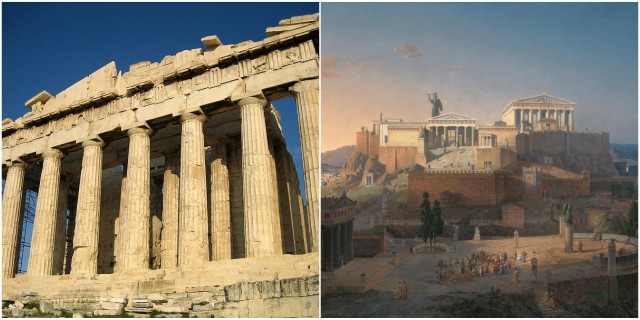In 5th century BC Athens, after the Athenians won the battle of Marathon against the Persians, the practice of ostracism began. It was a political procedure designed to curb the power of any rising tyrant without bringing any charges against him. By using this simple procedure any individual could be expelled from the city for ten years.
The term ostracism was derived from ostrakon, referring to the potsherds or pieces of broken pottery that were used as the writing surface to nominate people for expulsion. It was installed in Athens by Cleisthenes after the expulsion of Hippias in 508 BCE, but it was used for the first time in 488–487 BC for the expulsion of Hipparchus, son of Charmus and a relative of the tyrant Hippias.

Every year in January, the people of Athens were asked if they wanted to hold an ostracism. If they voted “yes” then around two months later they met again in the Agora where an ostracism would be held. Every citizen carried with him an ostrakon on which they had scratched the name of the person they wanted to be ostracized.
In the period of around two months that followed after the citizens of Athens voted to hold an ostracism, a number of public campaigns were held in order to convince the citizens to ostracize a certain person. The public campaigns included prepared ostraka that were distributed among the citizens of Athens.

Some sources say that if 6,000 ballots were cast, the individual with the most votes was sent into exile for ten years, while others claim that in order to be ostracized the individual had to be identified in at least 6,000 votes. More than 10,000 political ostraka have been excavated in the Athenian agora and in the Ceramicus.
The ostracized person had ten days to leave the city and suffered no other penalty, but if he returned earlier the penalty was death. The ostracized person was not formally deprived of his citizen status or his property. After ten years, he was free to return without stigma.

In some cases, the assembly could recall an ostracized person ahead of time. This is how Pericles’ father Xanthippus, Aristides the Just, and Kimon returned to Athens before the 10-year period had expired.
In a period of nearly one century (508-417 BCE) we know of fewer than twenty ostracisms. The last ostracism in Athens was that of the demagogue Hyperbolos that was probably held in 416–415 BCE. The question was put to the assembly each year but the procedure of ostracism was not implemented again.
